You’ll achieve professional jewelry finishes by mastering three essential techniques. First, use progressive sanding starting with 400 grit, advancing through 600 and 1200 grit while cleaning between stages. Second, select proper polishing compound combinations—dense felt mops with Tripoli for pre-polish, then wool mops with rouge for final buffing. Third, perfect your burnishing with controlled steel burnisher pressure using consistent circular motions. These systematic approaches separate amateur work from stunning, professional-grade pieces that’ll elevate your craftsmanship to the next level.
Master the Art of Progressive Sanding for Mirror-Like Results
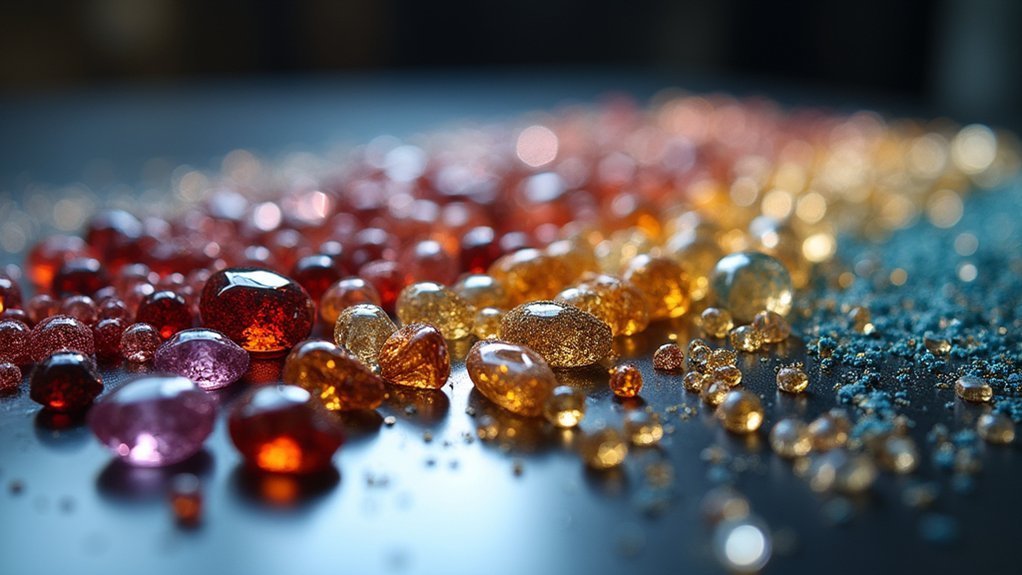
While achieving a professional mirror-like finish might seem intimidating, mastering progressive sanding transforms this challenge into a systematic process that delivers exceptional results.
Start with 400 grit sanding sheets to remove deep marks and fire scale from the surface of the metal. Progress through 600 grit, then 1200 grit, carefully examining for remaining scratches at each stage.
Use graded wet and dry sheets to maintain consistent pressure across your piece. Clean thoroughly between stages to prevent cross-contamination that could compromise your polishing process.
You’ll achieve a satin appearance indicating readiness for polishing tools. This methodical approach to cleaning and polishing guarantees your high shine mirror finish meets professional standards every time.
Choose the Right Polishing Compound and Mop Combinations
After achieving that perfect satin finish through progressive sanding, you’ll need to select the right polishing compound and mop combination to transform your prepared surface into a brilliant mirror shine.
| Metal Type | Initial Polishing Mops | Final Polishing Compound |
|---|---|---|
| Platinum | Dense felt/muslin | Platinum-specific compound |
| Gold/Silver | Dense felt/muslin | Tripoli for pre-polish |
| All metals | Wool/swansdown | Rouge for final buffing |
Your buffing machine requires specific polishing methods for best results. Use denser polishing mops initially, then switch to softer materials for high shine. Apply polishing compound sparingly—just one second—ensuring effective cutting without overloading. Don’t apply more pressure; instead, change polishing direction between compound grades. This prevents cross-contamination on softer metals. Remember to maintain polishing mops regularly using a buffing rake, removing accumulated residue to preserve their effectiveness and extend lifespan.
Perfect Your Burnishing Technique for Professional Edge Finishing
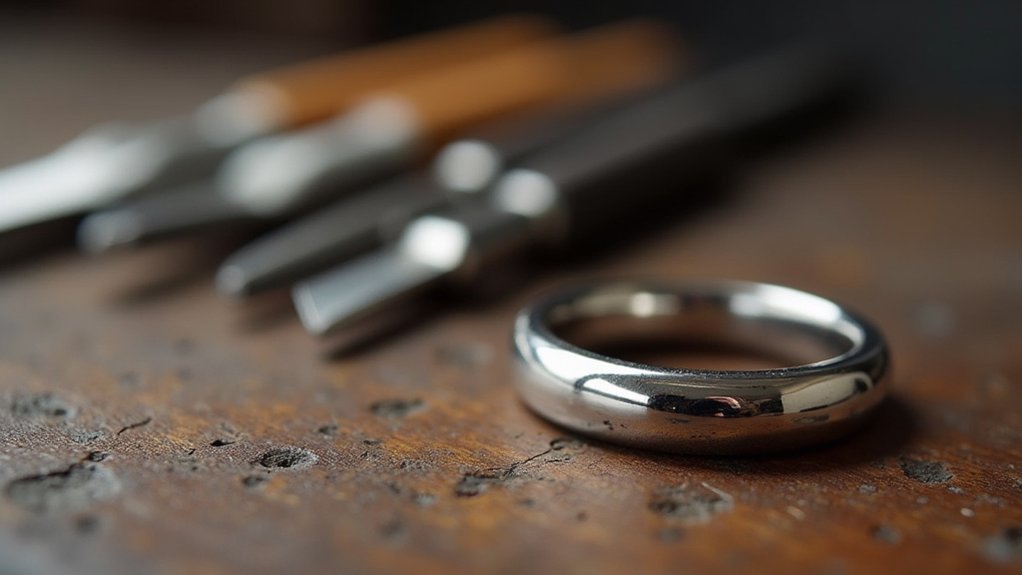
Once you’ve completed polishing, burnishing becomes your secret weapon for achieving those crisp, professional edges that separate amateur work from masterpiece jewelry.
This finishing technique involves using a steel burnisher with controlled pressure to compress your metal’s surface, creating exceptional shine without removing material.
You’ll get best results on softer metals like fine silver and gold. Move your burnisher in consistent circular motions across scratch-free surfaces—burnishing must come after all filing and sanding.
Maintain steady, controlled pressure throughout to prevent uneven areas.
For mirror-like finish, apply polishing compound to your burnisher before use.
These advanced jewelry techniques transform ordinary pieces into stunning creations. Master proper burnishing, and you’ll consistently deliver professional-quality surface finishes that truly shine.
Frequently Asked Questions
What Are the Do’s and Don’ts of Jewelry?
You should always invest in proper surface preparation and clean your polishing tools regularly. Don’t skip sanding processes or forget safety precautions like eye protection and ventilation when finishing jewelry pieces.
What Do Jewelers Use to Polish Rings?
You’ll use rotary tools like Dremel Multi Tools with polishing compounds – tripoli for pre-polishing, rouge for mirror finishes. Different graded mops from coarse to fine create professional results on rings.
How to Smooth Metal Edges in Jewelry?
You’ll start with needle files to shape rough edges, then progress through wet sanding grits from 400 to 1200. Use rotary tools cautiously for speed, maintaining control to avoid removing excess material.
How Can I Stop My Jewelry From Tarnishing?
You can prevent tarnishing by storing jewelry in anti-tarnish pouches, cleaning regularly with soft cloths, applying protective coatings, avoiding chemicals like perfumes, and wearing pieces frequently since skin oils help maintain polish.
In Summary
You’ve now got the essential techniques that’ll transform your jewelry from amateur to professional quality. Remember, progressive sanding builds your foundation, the right compound-and-mop combo brings out that coveted shine, and proper burnishing creates those crisp, flawless edges that customers notice immediately. Don’t rush these processes—each step builds on the last. With consistent practice of these three core techniques, you’ll achieve the mirror-like finishes that set professional jewelers apart.

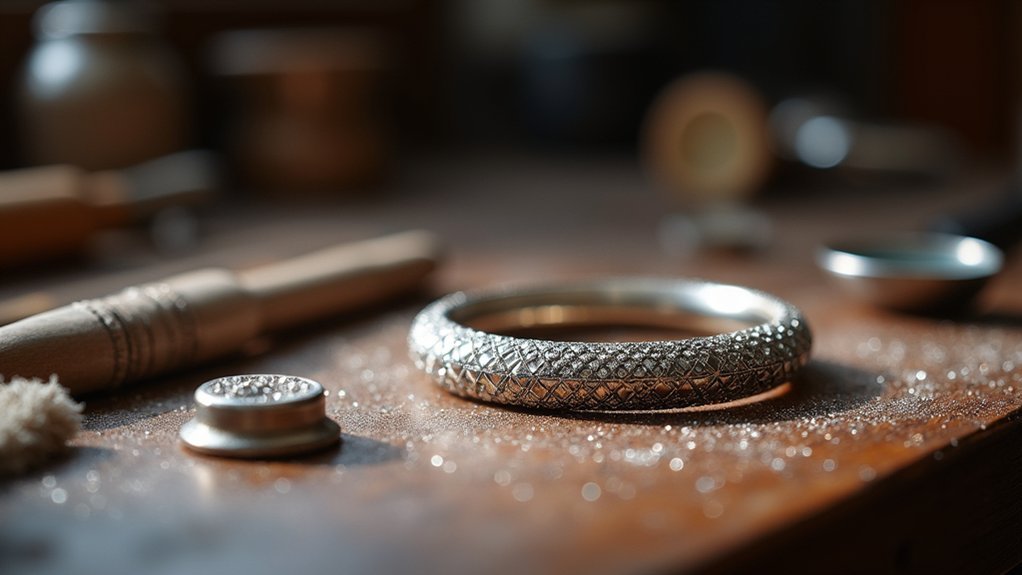
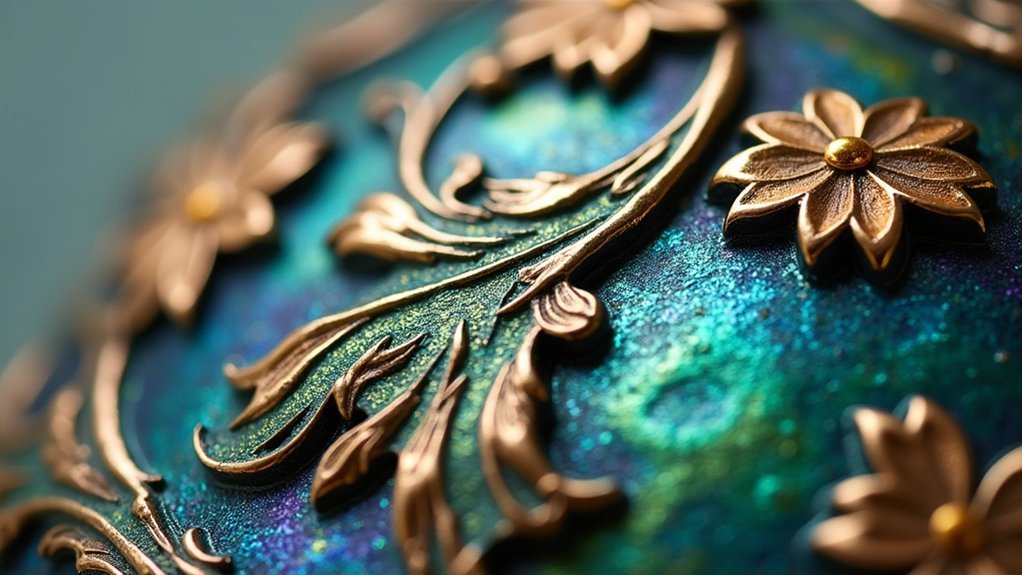
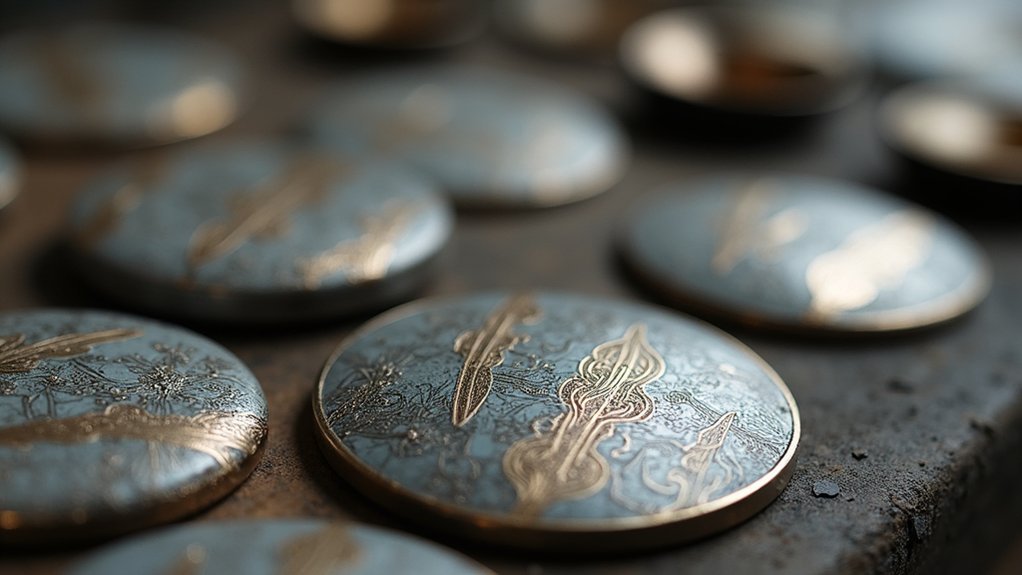
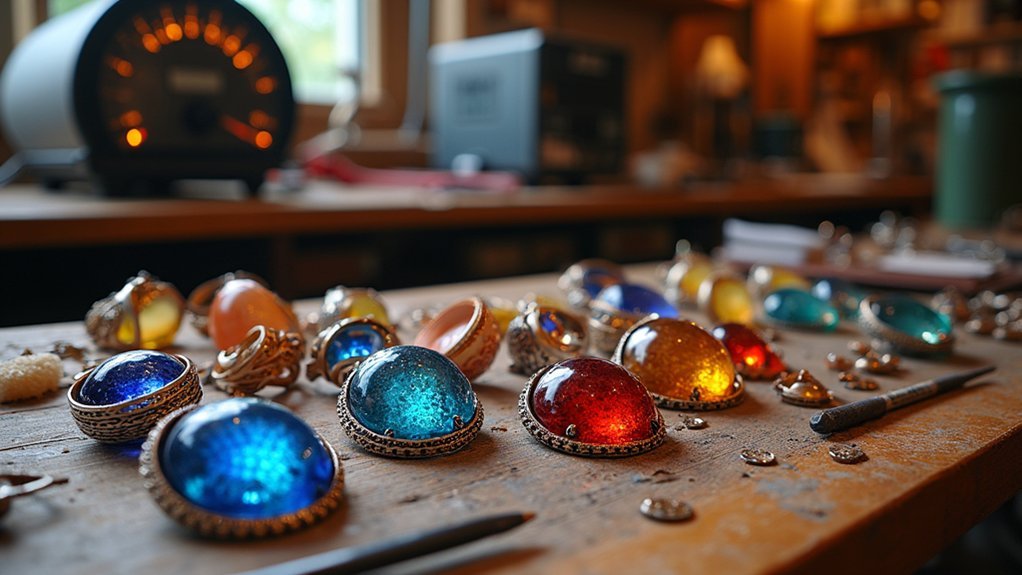
Leave a Reply